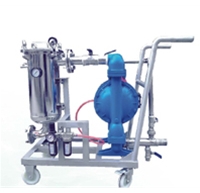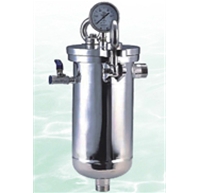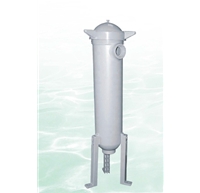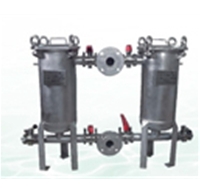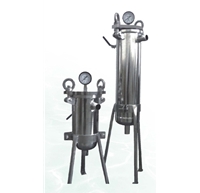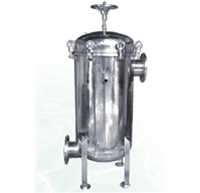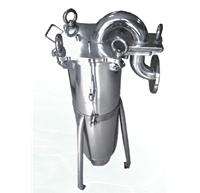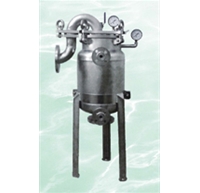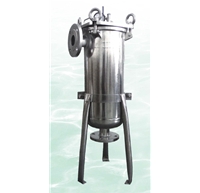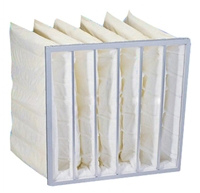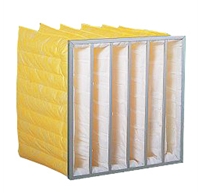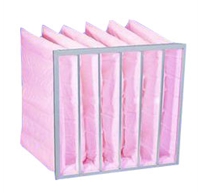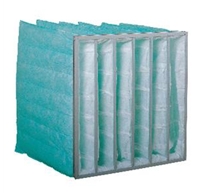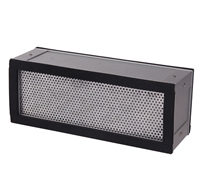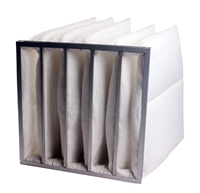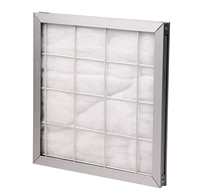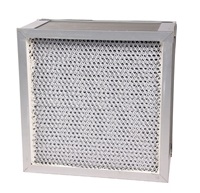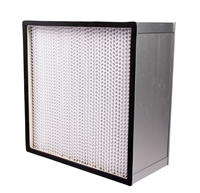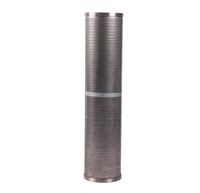In the face of a significant rise in the atmosphere of the PM2.5 level, in addition to passive tolerance, there is no way to take the initiative to improve? Although from a macro perspective, the fundamental way to improve the quality of air must rely on the government through administrative, legal, economic and other comprehensive means of long-term governance can be improved. But at the micro level, using some of the existing air purification products may be the most realistic, but also the most effective means. Especially for people living in more time indoor environment, the use of suitable outdoor products can be most of the atmosphere of the PM2.5 refused to the door of the window. Such products should have at least the following functions:
(1) primary air filter
Primary effect air filter is generally used as the first process of fresh air treatment, mainly used to filter 5 m or more particles.
(2) HEPA (high efficiency air filter)
High efficiency air filter is a kind of multilayer purification technology which is widely used at present. The filter medium is made of fine glass fiber, the thickness and the texture is very similar with blotting paper. HEPA high efficiency filter has always been considered to be the lowest removal rate of all 0.3 microns and larger particles up to 99.97%. According to the standard requirements of the American Lung Association, called the "real" HEPA efficient filter, must make the particles penetrate the filter media ratio shall not be higher than 3/10000.
Qualified high efficiency air filter is the main force in the removal of PM2.5 in the fresh air. Whether it is inorganic particles, organic particles or microbial particles, as long as the diameter of not less than 0.3 microns, you can get a more satisfactory removal effect.
However, if the aperture of the filter is only limited to the PM2.5, it can not fundamentally solve the problem of the quality of fresh air. Because the removal of outdoor air in aerosol pollutants, of which about 0.001 microns in diameter of the gaseous pollutants, HEPA is also the door open". On the other hand, the harm caused by PM2.5, and even the formation of PM2.5 itself, are closely related to gaseous pollutants. If the vast majority of gaseous pollutants can not be rejected at the same time out of the window, they enter the room, can be converted into PM2.5 under certain conditions. Therefore, it is necessary to carry on the molecular level filtration of fresh air, which is the following to mention the gas pollution filter.
(3) gas pollution filter
For gaseous pollutants, common treatment technologies include activated carbon adsorption, plasma / negative ion purification, photocatalytic oxidation and so on. The following principles for them to make a simple introduction:
Plasma purification -- when gaseous pollutants through the plasma generator, the high voltage pulsed electric field, before and after, along the steep narrow pulse width (NS) of the high voltage pulse corona discharge, non equilibrium plasma energy at room temperature, which produce large amounts of high energy electrons (about 5eV) and has strong oxidation of hydroxyl radical (OH, HO2, O), high-energy active particles and strong oxidation of O3, non elastic collision and organic molecules, the chemical bond of organic molecular fracture, a series of complex chemical reactions, oxidation degradation, the pollution of organic compounds into harmless carbon dioxide and water, the fresh air purify.
Negative ion purifying negative ions is low voltage to DC negative high voltage pulse oscillation circuit through the electronic negative ion generator in the brush tip by tip or DC high voltage corona high, large amount of negative charge from high speed (e-), and negative charge no longer exists in the air, and oxygen molecules by air immediately the capture (O2), negative ion formation. The dust in the air of negative ions and charged with, and then settled to the floor or other surface, play with fresh air.
Photocatalytic oxidation (photocatalyst) - most photocatalytic oxidation using TiO2 as catalyst, the catalytic mechanism of it is generally thought that the wavelength is less than 380nm under the irradiation of light, TiO2 valence electrons will be excited into the conduction band and the formation of electron hole pairs, the formation of electron hole pair transfer to semiconductor particles the surface species can be captured. Light induced conduction band electrons and adsorption on the catalyst surface O2 binding to form.O2-, and then through a series of reactions to generate.OH radicals. Holes and the surface of the water adsorbed on the surface of the water or cover the surface of the catalyst particles can also form a hydroxyl free radical.OH. Due to the formation of.OH radicals with a high degree of chemical reactivity, and thus can make the catalyst surface adsorption of organic matter occurs a series of chemical changes, and ultimately into CO2 and other inorganic compounds.
The above three kinds of gas pollution treatment technologies have obtained different degree of practical application. In particular, photocatalytic oxidation technology, many organic pollutants can be converted into inorganic substances, the reaction is rapid and complete, no harm to the human body, so the indoor air purification has broad application prospects.
However, there are some similarities between the three technologies:
The inorganic pollutants, such as SO2 and NOX, which are common in the atmosphere, can not be completely removed, because the final product of these inorganic pollutants is still the sulfur oxides and nitrogen oxides.
There are security risks. The plasma / anion purification to high pressure ionization air may decompose harmful gases such as nitrogen species, as well as O3, NOX and N+ exceed the standard, heavy ion; photocatalytic oxidation most equipped with UV excitation, there are potential problems.
The peak load is small. The energy of plasma / negative ion cleaning is completely derived from electric energy. Although the photocatalytic oxidation can use natural light energy, it is a nano material, and it is also restricted by energy. In addition, the gas residence time in the treatment equipment is very short, some pollutants may not be processed in time to enter the room, that is, a "bypass" phenomenon.



